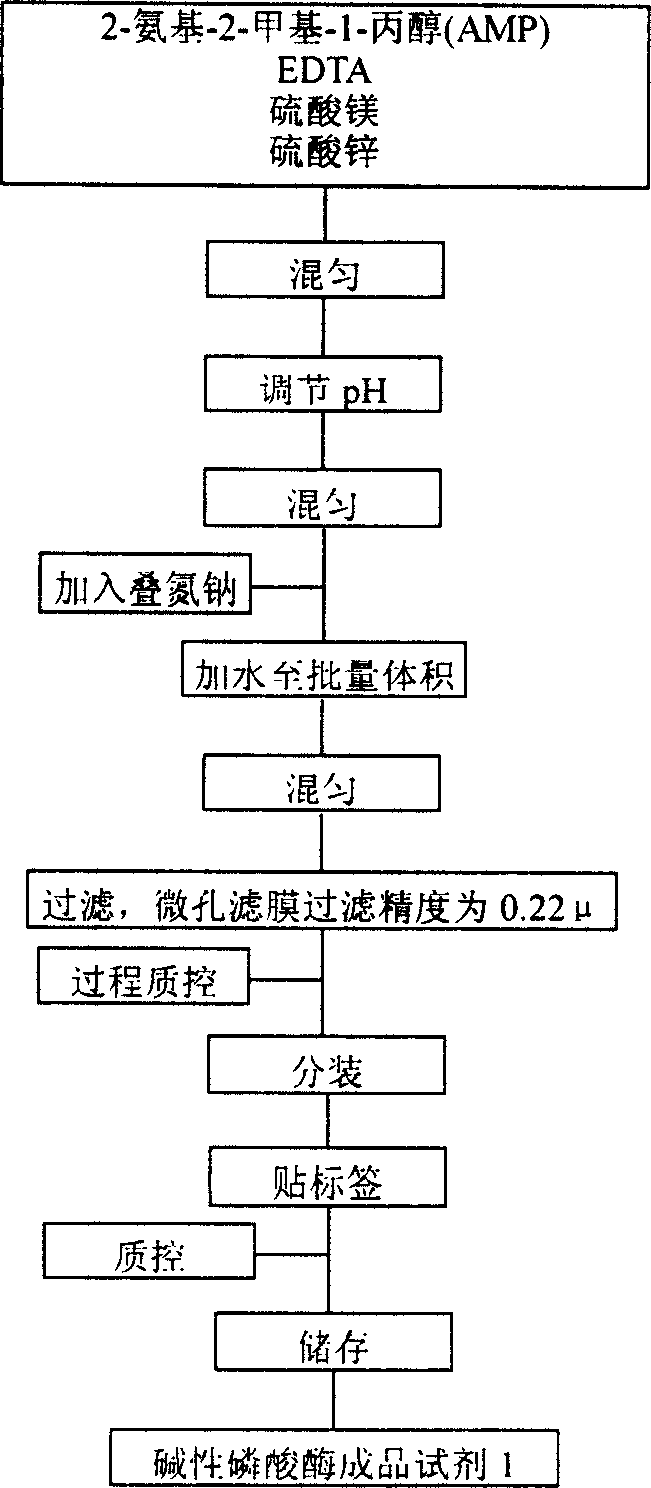Alkaline phosphatase detecting reagent
A technology for detecting reagents and phosphatase, applied in the field of diagnostic reagents, can solve problems such as large differences between reagent batches, missed diagnosis, misdiagnosis, etc., and achieve the effect of long open bottle validity period and long shelf life
- Summary
- Abstract
- Description
- Claims
- Application Information
AI Technical Summary
Problems solved by technology
Method used
Image
Examples
Embodiment 1
[0035] Glycine and sodium lauryl sulfate were added to the reaction substrate at a concentration of 0.1mmol / L and 3mmol / L respectively as finished reagent 2 as a stabilizer, and the pH was adjusted to 7.5 with Good’s buffer. (hereinafter referred to as D reagent)
Embodiment 2
[0037] Glycine and sodium lauryl sulfate were added to the reaction substrate at a concentration of 1mmol / L and 17mmol / L respectively as finished reagent 2 as a stabilizer, and the pH was adjusted to 11.0 with Good’s buffer. (hereinafter referred to as E reagent)
Embodiment 3
[0039] Glycine and sodium lauryl sulfate were added to the reaction substrate at concentrations of 0.5mmol / L and 10mmol / L respectively as finished reagent 2 as a stabilizer, and the pH was adjusted to 9.0 with Good’s buffer. (hereinafter referred to as F reagent)
[0040] The above three reagents D, E, and F were tested separately, and the results are shown as follows:
[0041] Table 5 Reagent blank absorbance results (28 days)
[0042]
[0043] Table 6 reagent detection control product results (28 days)
[0044]
PUM
 Login to View More
Login to View More Abstract
Description
Claims
Application Information
 Login to View More
Login to View More - R&D Engineer
- R&D Manager
- IP Professional
- Industry Leading Data Capabilities
- Powerful AI technology
- Patent DNA Extraction
Browse by: Latest US Patents, China's latest patents, Technical Efficacy Thesaurus, Application Domain, Technology Topic, Popular Technical Reports.
© 2024 PatSnap. All rights reserved.Legal|Privacy policy|Modern Slavery Act Transparency Statement|Sitemap|About US| Contact US: help@patsnap.com










